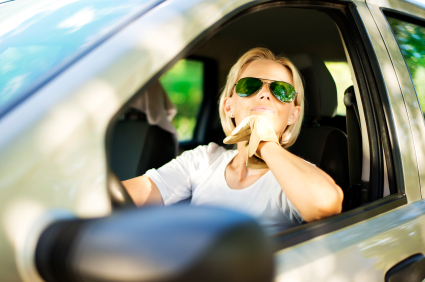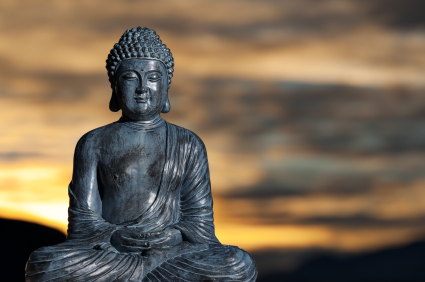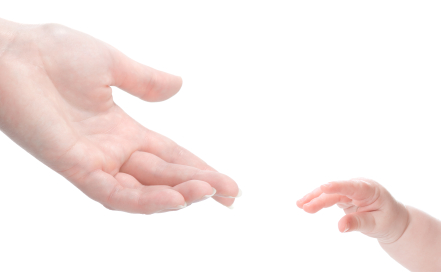Feeling lonely? Meditate!
I spent this past weekend in NYC, the place that I once called home and in my heart of hearts, still do. But as I sat at lunch yesterday and watched people stroll by, I realized that many of them were alone. And I remembered that despite the millions of people in NY, I often felt very much alone there. I don’t feel that way very often any longer and yet, I imagine that it’s not simply a geographically-driven emotion but rather, life changes have a lot to do with loneliness. Indeed, by the time that midlife hits full on, many adults find themselves going through a divorce, losing loved ones to illness and watching their children leave the house for college or to start their lives and careers. Sound familiar? Well, then you might also find the link of these events to loneliness and in turn, to an increased risk of heart disease, depression and even premature death, important.
While the underlying reasons for these associations are complicated, suffice it to say, research suggests that stress can trigger inflammation that has been shown to increase the risk for chronic illness and death. Fortunately, for the first time, there may be a solution: meditation.
Researchers from UCLA say that study findings show that incorporating 30 minutes of daily meditation practice may help to alter the way our genes bolster inflammatory processes in the body by altering feelings of loneliness. Indeed, when people between the ages of 55 and 85 were trained in mindfulness meditation practice, they did more than find inner peace. Here’s the skinny:
Half of the participants participated in a trainer-led, two-hour mindfulness sessions in which they were guided through mindfulness meditation exercises, mindful yoga and stretching, and group discussions that were intended to help promote mindful awareness of the present moment, and moment to moment experience; these sessions were held weekly for eight weeks. They also participated in a day-long retreat towards the end of the study where their practice were more closely integrated and discussed. Additionally, these men and women practiced at least 30 minutes of mindfulness sessions for six days a week during the program.
Mind you, the study was very small and included only 40 participants. However, learning how to live in the present appeared significantly reduce feelings of loneliness and alter both genes and protein markers of inflammatory by as much as 25%, including the signal that activates the inflammatory processes in the body. The researchers say that also observed a decline in C-reactive protein, which has been linked to heart disease.
Loneliness..scientifically, it’s been described as “a state of social distress that arises when there is a discrepancy between one’s desired and actual social relationships.”
I like this description better, from the great Buddhist nun and teacher, Pema Chodron:
Loneliness is “restless and pregnant and hot with the desire to escape and find something or someone to keep us company. When we can rest in the middle [through meditation practice], we begin to have a nonthreatening relationship with loneliness, a relaxing and cooling loneliness that completely turns our fearful patterns upside down.”
Mindfulness meditation. It may alleviate more than heartache and benefit in ways that we have yet to imagine.
Read More
Wednesday Bubble: Skin Cancer Awareness – You and Your Car
 According to recent estimates, skin cancer accounts for half of all cancers in the U.S. More than 3.5 million cases of basal or squamous cell skin cancer are diagnosed yearly; these types of skin cancer are generally found on the base or surface of the skin and can be cured if treated early enough. Melanoma — the most deadly of all skin cancers that affects the melanocytes, or cells that create skin pigmentation — accounts for more than 2/3rds of skin-cancer related deaths; this year, more than 76,000 cases are expected to be diagnosed. And, one person dies of melanoma in this country every 57 minutes.
According to recent estimates, skin cancer accounts for half of all cancers in the U.S. More than 3.5 million cases of basal or squamous cell skin cancer are diagnosed yearly; these types of skin cancer are generally found on the base or surface of the skin and can be cured if treated early enough. Melanoma — the most deadly of all skin cancers that affects the melanocytes, or cells that create skin pigmentation — accounts for more than 2/3rds of skin-cancer related deaths; this year, more than 76,000 cases are expected to be diagnosed. And, one person dies of melanoma in this country every 57 minutes.
In other words, skin cancer is not something to mess around with.
If you are like me, a child of the 60s and 70s, catching rays meant baby oil and tin foil. My father, who is in his late 80s, grew up on the beach and has spent the last 20 years having patch after patch of skin cancer removed. His body is a veritable skin cancer harvester, and he has even been permanently disfigured due to a botched procedure to freeze cancer cells below the surface of the skin on his nose. He’s lucky; he’s still alive and catching those cancers early enough.
I can’t emphasize it more: wear sunscreen. Moreover, wear it when you are in the car!
A study in the June issue of the Journal of the American Academy of Dermatology demonstrates that sun protection while driving is sorely lacking, despite the fact that driving evidently constitutes the largest percentage of total time spent outdoors, more than exercise or gardening. Moreover, on average, the majority of people in this country spend 80 to 100 minutes of their day in their cars.
Mind you, this is a retrospective study, which means that the researchers look back at events that have already occurred; this case, they mailed surveys to 675 patients who had previously attended a surgical clinic for skin cancer. Of all of these patients, 90% had a history of at least one type of skin cancer and 30, of malignant skin cancer.
Ironically? A majority did not believe that they needed to wear sunscreen while driving regardless of whether or not the windows were open or closed, although 53% of people with a prior history of skin cancer thought that they should wear it with the windows open. Real life use of sunscreen was different; about a third of these people reported wearing sunscreen “most of the time,” while only 15% used it while driving. What’s more, about a third of the people who reported wearing sunscreen most of the time while in a vehicle did not apply it to their arms or hands.
Additionally, having tinted car windows didn’t seem to provide additional protection. An equal percentage of people with or without tinted windows developed non-malignant skin cancer (85%); the only difference was the side of the body the skin cancer resided.
Here’s what you need to know:
- Automobile glass does not contribute to skin cancer equally. Important factors include the type of glass, the degree of tinting and the presence or absence of lamination or UV-absorbing film.
- In one study, clear auto glass transmitted 62% of UV radiation whereas dark-tinted glass transmitted 11.4%.
- Windshields are made from laminated glass that allows, on average, 2% transmission of UV radiation. Conversely, your side and rear windows are typically non-laminated and allow up to 80% of UV radiation. This means that the shoulder, arm and hand closest to the window needs to be protected because they are receiving the highest exposure to UV rays.
There are some issues with this study; for example, it relied on recall and and patients may have overestimated or even underestimated real exposure. However, the message is quite clear: wear sunscreen when you drive.
p.s. May is skin cancer awareness month. Pass it on: wear sunscreen, period.
Read MoreThe Mommy Factor Redux
I was scrolling through my Facebook stream yesterday and came upon a post written by a woman I know via the social spheres. She was commenting on the fact that she was consistently asked why she only had one child, as if having only one was an indication that something was wrong or that she and her partner couldn’t handle more.
It’s all about choice. More importantly, the choices we make do not always require an explanation unless we choose to offer one.
A few years back I wrote the following post. I chose to resurrect it today because her post resonated deeply with me.
I’m fairly active on Twitter. And the other day, someone I follow and respect greatly tweeted the following:
Gaining a whole new appreciation for child-free by choice types and those without kids. Society views these women so very differently.
Data released by the Pew Research Center in 2010 demonstrated that childlessness is increasing in the U.S., with roughly 1 in 5 women past childbearing years currently childless. Although the research points to “never married” as a factor, it also emphasizes the power of individual choice, employment opportunities and most importantly, a growing opinion that ‘without child’ does not equate to ’empty life.’
I am one of those women who are child-free by choice. I am a statistic. And my life is not empty.
“But aren’t you afraid you’ll regret it someday?”
“Don’t you feel badly that you didn’t give your parents grandchildren?”
“Do you understand what you are missing out on?”
Guess what? I’m going to share a little known fact with you.
I became pregnant at a time in my life when I felt I was too unsettled to properly care for a child. A time when I was with a partner with whom I didn’t feel comfortable sharing parenting responsibilities. A time that was simply the wrong time. Period. And after that? I certainly weighed the pros and cons of having children, many times. However, I ultimately decided that I was happier without having children of my own.
Shocking isn’t it?
My experience might resonate with some of you. Others might disapprove of my decision. At the end of the day? It truly is about personal choice, responsibility and a close, close look at oneself. Not everyone is suitable for parenthood.
Just because you can, doesn’t mean you should.
My life has been filled and surrounded by children for almost two decades now. I am an Aunt to three wonderful, amazing nephews and spending time with them brings me more pleasure than I can adequately express. I am also a surrogate Aunt to the children of an old friend, and although I don’t see them quite as often as I would like, I recently came to the realization that their presence, however sporadic, enriches my experience as a human being and as a woman in ways, again, for which there are no words.
Now that I’ve passed my fiftieth year, and two years after I first penned this, I still don’t feel as though the decision to leave the childbearing to other women is one that I regret or will ever regret. I made the decision based on timing, circumstance and a nagging feeling that I wasn’t meant to have a child, at least not in this lifetime, that I had a lot to offer the children in my life in ways that didn’t include being their parent.
So the next time you see a woman walking down the street without a child, or find a couple moving in next door without children, it’s probably best to assume that it’s best if all bets are off. There are many reasons why women don’t have children. And although being a mother is the defining moment for many women I know, I know just about as many who’ve chosen to remain childless and have experienced (and continue to experience) alternative defining moments in their womenhood, their lives and their spirits.
It’s all about choice. I’m grateful to have had the ability to decide what is right for me, to make choices based on that ability. Not every woman does.
Read MoreMirror mirror…
[Girl before a mirror. Pablo Picasso. Boisgeloup, March 1932]
What do you see when you look in the mirror? Or perhaps a better question is ‘who?’
I have noticed something odd, something that is sending me into a bit of a tizzy.
I feel older. And the reflection I see in the mirror is not something that I like very much.
It’s a bit of a shock, as I’ve always managed to keep the aging bug at bay. I’ve spent years exercising daily, eating right and engaging in strategies that are supposed to boost physical and emotional health and wellbeing.
Yet, something is missing. A piece of me.
I spend a lot of time on this blog talking about aging and the importance of seeing yourself from the inside out. I’ve discussed what it is like to become invisible in the workplace, how our bodies are redefining themselves, often without our help or intervention, and how old habits are starting to die hard, really hard. I’ve tried to empower you to take charge and accept, but not without going down with a fight against the more negative aspects of the aging process. I wonder where I’ve lost myself within this equation.
Anais Nin is quoted as writing that we don’t see things are they are, we see things are we are. But what happens when what we are, what we’ve become, is skewed by our changing vision? How do we navigate that path without the self-criticism and negative self talk, you know, that voices that we use to tell ourselves that we look old, that our face is sagging and the lines are growing deeper, that the cellulite is more defined, that our midsection appears to have added a bit of extra cushion? When is the appropriate time to rewind and erase the tape and create a new voice?
That time, at least for me, is now.
I apologize for the personal nature of this post, the rambling self indulgence; it’s likely that you are wondering what the heck I am talking about and why, after all, this blog is about evidence and information and data. But I realized this past weekend that the me in ‘menopause’ has somehow gotten lost in the Flashfree shuffle. And that when I actually take stock, I feel a bit long in the tooth.
I’d like to hear from you, dear sisters, about your favourite strategies for overcoming self doubt, for changing the mirror image, for turning off the voices and for freeing your body, mind and soul from the aging bug.
This week, I am turning myself over to you. And I want to hear from you.
Who do you see when you look in the mirror?
Read More










